How Can you Heal Narcissistic Abuse in Therapy?

“I care for myself. The more solitary, the more friendless, the more unsustained I am, the more I will respect myself.”
-Jane Eyre by Charlotte Brontë
Narcissistic abuse is a form of emotional and psychological manipulation that can leave deep, enduring scars on a person’s psyche. It’s a kind of soul wound that impacts every aspect of one’s being – from self-image and interpersonal relationships to the very sense of reality itself.
When you’ve been subjected to narcissistic abuse, whether from a parent, partner, or other significant figure, it can be exceedingly difficult to recognize the extent of its influence on your life. This is in part because narcissistic abuse is insidious by nature; it gradually erodes your sense of self, your trust in your own perceptions, and your belief in your inherent worthiness.
The Narcissistic Parent: When Love is Conditional and Controlling
For those who grew up with a narcissistic parent, the impact can be particularly profound and far-reaching. A child’s sense of self develops in relation to their primary caregivers; it’s through these early interactions that we learn whether the world is safe or dangerous, whether we are lovable or defective, whether our needs and feelings matter or are irrelevant.
A narcissistic parent, however, is fundamentally incapable of providing the unconditional love, empathy, and attunement that a child needs to thrive. Instead, the narcissistic parent uses the child as a source of narcissistic supply – a means to bolster their own fragile ego and grandiose self-image. The child learns that they are only acceptable when they are fulfilling the parent’s needs and expectations. Love becomes conditional, based on performance and compliance.
Moreover, the narcissistic parent often employs an array of manipulative tactics to maintain control over the child. These may include gaslighting (denying the child’s reality), emotional invalidation (dismissing or punishing the child’s feelings), and parentification (forcing the child to take on adult responsibilities and emotional burdens).
Growing up in this environment, the child internalizes a profound sense of shame, inadequacy, and self-doubt. They may struggle with chronic feelings of emptiness, disconnection, and a pervasive fear of abandonment. They may find themselves repeatedly drawn into relationships with narcissistic partners, unconsciously recreating the dynamics of their early wounds.
Healing the Narcissistic Wound: A Multimodal Approach
Healing from narcissistic abuse is a multifaceted journey that involves reclaiming one’s authenticity, rebuilding self-worth, and learning to trust one’s own feelings and perceptions. Various therapeutic modalities can support this process, each offering unique insights and tools.
Depth Psychology: Illuminating the Shadow
From a depth psychological perspective, narcissistic abuse can be seen as a profound disintegration of the self. The narcissistic parent’s unattuned, manipulative behavior disrupts the child’s natural individuation process, causing a split between the authentic self and a false, compliant self.
Jungian analysis, in particular, emphasizes the importance of embracing the shadow – those disowned, repressed aspects of the self that we deem unacceptable. For the survivor of narcissistic abuse, this often includes healthy anger, assertiveness, and self-protective instincts that were dangerous to express in the abusive environment.
By courageously confronting and integrating the shadow, we reclaim our wholeness and vitality. We learn to set healthy boundaries, honor our own needs and desires, and relate to others from a place of centered groundedness.
Parts Work: Healing the Fragmented Self
Narcissistic abuse can also be conceptualized as a form of complex trauma, leading to fragmentation and dissociation of the self. Parts-based therapies like Internal Family Systems (IFS) and Ego State Therapy provide a compassionate framework for understanding and healing this inner fracturing.
From this perspective, we all have various parts or subpersonalities that hold different beliefs, feelings, and coping strategies. For the survivor of narcissistic abuse, certain parts may carry the burden of shame, self-loathing, and the felt sense of being fundamentally flawed. Other parts may have taken on protective roles, armoring against vulnerability or lashing out in self-preserving rage.
The goal of parts work is not to eliminate or subdue these parts, but to bring them into harmonious collaboration under the wise leadership of the Self. As we extend curiosity, acceptance, and even appreciation to our most wounded and protective parts, they can begin to release their extreme roles and burdens. We discover that even the parts we once deemed shameful or destructive were doing their best to help us survive.
Somatic Approaches: Releasing the Trauma from the Body
Narcissistic abuse is not just a psychological wound; it is a full-body injury. The chronic fear, hypervigilance, and self-abandonment that characterize narcissistic abuse lead to a profound disconnection from the body and its wisdom.
Somatic therapies like Sensorimotor Psychotherapy and Somatic Experiencing recognize that trauma is stored not just in the mind, but in the very cells and fibers of our physical being. By gently guiding attention to the body’s sensations, impulses, and movement patterns, these approaches help to release stuck survival energy and restore a sense of safety and vitality.
For the narcissistic abuse survivor, somatic work can be particularly transformative in rebuilding a sense of physical boundaries, autonomy, and self-trust. As we learn to listen to and honor the body’s signals, we develop a felt sense of our own inherent worth and wisdom.
Existential Therapy: Finding Meaning in the Wound
On an existential level, narcissistic abuse confronts us with some of the deepest questions of human existence: What is the nature of good and evil? How do we create meaning and purpose in a world where love can be so distorted? How do we maintain faith in ourselves and others after profound betrayal?
Existential therapy grapples with these ultimate concerns, viewing the human condition as inherently characterized by freedom, responsibility, and the search for meaning. From this perspective, healing from narcissistic abuse is not just about symptom relief, but about forging a new relationship with oneself and the world.
This may involve grieving the loss of the idealized parent or partner, facing the existential aloneness that their abuse denied, and ultimately choosing to create meaning and purpose in the face of life’s inherent uncertainties. It is a hero’s journey of sorts, a descent into the underworld of the psyche and a return with hard-won wisdom and resilience.
Integrating the Shattered Self
Healing from narcissistic abuse is rarely a linear journey. It is a spiral path, a labyrinthine descent into the depths of the soul. It requires tremendous courage, compassion, and patience.
There is no singular therapeutic modality that holds the key to recovery. Rather, it is often the integration of various approaches – the weaving together of insight, emotional catharsis, somatic release, and meaning-making – that allows for the most profound and sustainable transformation.
At its core, healing from narcissistic abuse is a process of re-parenting oneself. It is learning to provide for oneself the love, attunement, and protection that were missing in the early environment. It is developing a secure, loving bond with one’s own inner child, and fiercely safeguarding that sacred relationship.
As we do this deep inner work, we begin to reclaim our birthright: our creativity, our vitality, our ability to love and be loved. We come to recognize that the shame and inadequacy we carried were never truly ours – they were the distorted projections of a disordered psyche. We learn to stand in the truth of our own inherent worthiness, and to relate to others from that grounded, centered place.
This is not to say that the wounds of narcissistic abuse ever fully disappear. They become a part of us, woven into the fabric of our being. But as we integrate them with compassion and wisdom, they can also become a source of profound strength, empathy, and resilience. We learn to transform our pain into purpose, our grief into grace.
In the end, healing from narcissistic abuse is about reclaiming the lost pieces of soul – the vibrancy, the vulnerability, the sacred wholeness that is our birthright. It is a journey of remembrance, of coming home to ourselves in all our shattered brilliance. And it is a journey we need not walk alone.
Bibliography:
Abrams Spring, J. (2019). Transcending Post-infidelity Stress Disorder: The Six Stages of Healing. Berkeley, CA: Celestial Arts.
Beveridge, K., & MacKenzie, G. (2022). Healing the Fragmented Selves of Trauma Survivors: Overcoming Internal Self-Alienation. New York, NY: Routledge.
Bradshaw, J. (2010). Homecoming: Reclaiming and Championing Your Inner Child. London, UK: Piatkus Books.
Jurkovic, G. J. (2014). Lost Childhoods: The Plight of the Parentified Child. New York, NY: Routledge.
Levine, P. A. (1997). Waking the Tiger: Healing Trauma: The Innate Capacity to Transform Overwhelming Experiences. Berkeley, CA: North Atlantic Books.
McBride, K. (2022). Will I Ever Be Good Enough?: Healing the Daughters of Narcissistic Mothers. New York, NY: Atria Books.
Miller, A. (2021). The Drama of the Gifted Child: The Search for the True Self. New York, NY: Basic Books.
Ogden, P., Minton, K., & Pain, C. (2006). Trauma and the Body: A Sensorimotor Approach to Psychotherapy. New York, NY: W.W. Norton & Company.
Schwartz, R. C. (2021). No Bad Parts: Healing Trauma and Restoring Wholeness with the Internal Family Systems Model. Boulder, CO: Sounds True.
van der Kolk, B. A. (2014). The Body Keeps the Score: Brain, Mind, and Body in the Healing of Trauma. New York, NY: Viking.



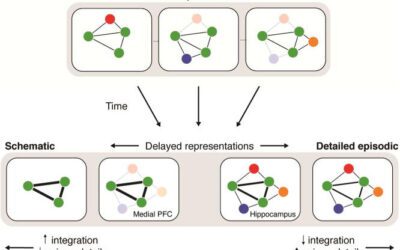

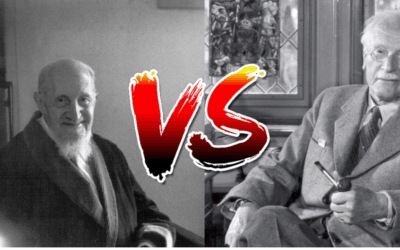






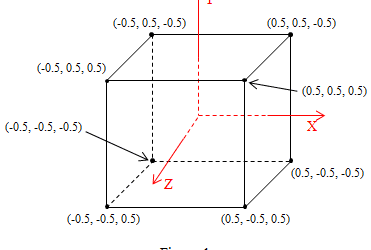


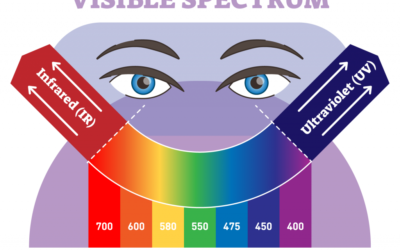




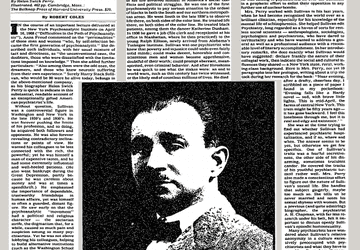





0 Comments